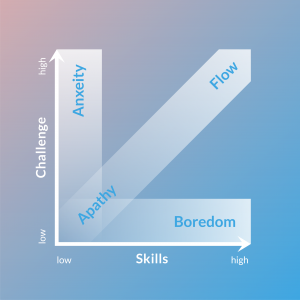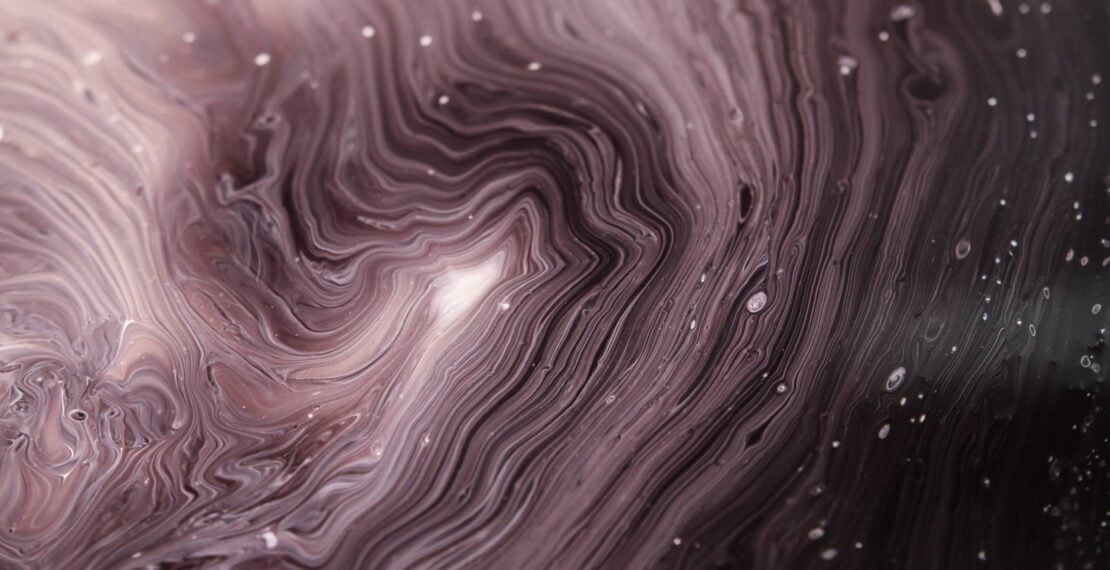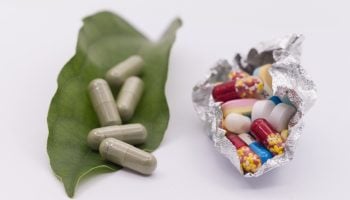Have you ever caught yourself in a state of complete fascination with what you’re doing? Ever find yourself starved halfway to dizziness after many hours that just seemed to fly by while you were working on accomplishing your goal?
Psychology has a name for this state of relentless focus. It’s called flow, and it’s likely that, while in it, your mental resources are too scarce to reflect on how smoothly the process is going – maybe just sufficient enough to allow you to regain awareness of your surroundings and your physical state every once in a while before slipping right back into immersion.
The activity you’re engulfed in occupies your full attention, loading you with energy and the timeless sense of doing exactly what you’re supposed to be doing, right there and then. There exists nothing beyond your pure, engaged presence and your spirit and senses are completely consumed by the experience that’s getting the best out of you.
About five decades ago, a concept that has for millennia been weaving through eastern religions and philosophies in different forms was researched and described by the pioneer of positive psychology, Mihály Csíkszentmihályi. Through many interviews he had conducted with talented artists and athletes, he found that they often report on moments of great inspiration and peak performance in terms of their work effortlessly flowing out of them, without conscious involvement, as if they were channeling some greater force. Thus was born the term flow state.
What is flow?
Flow is, simply put, a state of heightened immersion into an action. It is achieved by practicing activities that are mentally, physically, and/or spiritually challenging and inspiring. Flow can be experienced by doing anything that you can lose yourself in – it can be triggered by meditation, creating and appreciating art, traveling, sports and exercise and, as discussed later, psychedelic journeying.
The flow state is characterized by visualizing and intensely focusing on one’s goals, which are perceived as real and attainable, with a strong feeling of command over what is being done. One’s performance is adjusted based on immediate feedback received from the process and the intrinsic feeling of success and ecstasy serves as further motivation, thus perpetuating the reward cycle. Flow is usually followed by neglect for time and space and a diminished awareness of one’s personal needs. As Csíkszentmihályi notes: “[…] there is something in the process […] that is so attractive that it overrides almost everything else, except maybe the need to eat and sleep and go to the bathroom.” Arguably, even these motives descend in priority to allow for intense channeling of flow.
For things to start flowing, the level of challenge presented needs to be supported by the level of skill and interest the individual has available to tackle the task. Aside from this requirement, it has also been shown that certain types of people are more inclined to achieve flow. These so-called “autotelic” personalities are characterized by strong interest in life, low self-absorbedness, and high persistence. These are the people who do things simply for the sake of doing them and enjoying the process, which usually leads to realizing the goals themselves.

Flow states, however, give us much more than mere pleasure with what we’re doing. They are highly useful as they bring us confidence and the rewarding feeling of being a good fit for something. This can facilitate our process of self-actualization and help us reach personal balance and better understand our purpose.
Teresa Amabile, an industrial psychologist from Harvard who has been researching motivation and inspiration in work for decades, found increases in measures of creativity, productivity, and happiness in workers up to three days after experiencing the flow state. It makes sense, then, to assume that regular flow can have a greatly beneficial effect on the quality of one’s professional and private life.
Ego & Flow
Everything that we perceive elicits some kind of response from us. The conscious, thinking part of the brain tries to register and react to anything it recognizes as related to its owner; often even to irrelevant things that just happen to cross into our stream of awareness. Our perceptions/reactions come in forms of opinions and attempts at explanation. These are expressed by an inner voice that constitutes our personality, and is also known as our ego; a voice shaped by all the people and situations we have been exposed to throughout our lives.
So what does this have to do with flow?
Exactly nothing – ego and flow don’t go together. That’s the point – in order to access the state of flow, one must overcome, or sidestep, the ego. Otherwise, there will be questions and awareness of the self, which will disable flow from… Flowing.
Removing the ego allows the subconscious mind to bloom. This is where our spontaneous creativity and instinctual reactions live. It’s the part of the mind that feels no need to spend its energy weighing out options and forming judgments – subconscious reasoning happens automatically and is more “us” than that which needs to pass through all the layers of social conditioning we’ve been exposed to before arriving at our thoughts.
Cognitive neuroscience has this “ego,” or “higher thought” part rather well localized in a region of the brain that goes by the name of prefrontal cortex (PFC). This area is considered to be the headquarters of sentience and is where complex cognitive processes such as planning and decision-making are carried out. It’s also been connected to working memory, temporal integration of goal-directed actions, learning associations between context and emotional response, self-conscious emotion and many other sophisticated functions that we don’t fully understand yet.
This brain region pretty much makes up our personalities, which, as discussed, need to be attenuated in order for us to start flowing. Empirical research, although scarce due to the trickiness of inducing flow in an experimental context, does seem to be finding that this is what happens during flow.
According to an fMRI study conducted on jazz musicians, the dorsolateral PFC, which is thought to correspond to self-regulation, is found to decrease in activity during improvisation, while the medial PFC, connected to self-expression, sees an increase. The authors argue that this consistently noted dissociated pattern of neural activity might be a requirement for the process of ad lib creation.
Another study attempted to induce flow by giving participants arithmetic tasks to solve, the difficulty of which would adjust dynamically according to the subject’s ability. When the tasks are just challenging enough to push users into flow, neuroimaging reveals increased activation of the inferior frontal gyrus (sense of cognitive control) and putamen (coding of outcome probability) and decreased activation of the amygdala (negative emotional arousal) and medial PFC (self-referential processing).
Although these results differ, they both report a drop in prefrontal activity, which supports the transient hypofrontality conjecture that a notable expert on flow, Arne Dietrich, argues for. This complex phrase denotes a down-regulation in the PFC during states of altered consciousness (including flow states), which should explain the loss of track of time, self-criticism, and conscious awareness of actions performed. The theory states that the mind is then allowed to function more freely, with less dependence on thought. In Arne’s words: “All altered states of consciousness are lower states of consciousness – you connect to nothing but your own reduced mind.”
However, the fact stands that the conjecture about the decrease in PFC activity, as stated, stems from the symptoms observed under the effect of flow and does not have enough empirical support on its own. Appealing as it might be, this type of inductive reasoning should be taken with a grain of salt until more direct evidence can be gathered.
Listen to our podcast with James Beshara to find out why the desires of the ego only serve a very small part of us or Click here to read the transcript
Can psychedelics facilitate a flow-like state?
At times, the discourse used to define flow experiences can seem as if it were describing a psychedelic trip. And indeed, it makes sense to assume that a large part of the purpose of psychonautical journeys is to reach this state of diminished ego, to feel empowered and in accord with who we are and what our lives are about – which is what flow states seem to offer.
Csíkszentmihályi has compared the flow experience to tripping, in an interview where he outlines flow as a “kind of a toned-down ecstasy.” He says: “[…] you can get a similar sensation by taking drugs, but the thing with the chemical path to ecstasy is that you haven’t done it yourself – it’s an external manipulation of your nervous system. And that doesn’t leave much residue in your consciousness. You don’t feel that you have achieved it, as you do when you get it through yogic techniques or true flow.”
So, the man himself thinks that the feeling of flow we get from psychedelics is not “true” because it’s achieved through a third party medium. This is in line with the reasoning that holds back many people from experimenting with psychedelics – feeling as if it were cheating and a having a desire to develop spiritually on their own, without taking shortcuts. However, can we really label these states as false knowing that they have the very real potential to reconnect us with our human core and the nature around us and help with psychological issues ranging from anxiety to addiction? We might get a clearer picture if we examine how similar the effects of flow and tripping actually are.
Listen to our podcast episode with Steven Kotler talking about: Flow States: Getting High While Totally Sober or Click here to read the transcript
What psychedelic imaging studies tell us
On the topic of neurophysiological activity changes during psychedelic experiences, a line of imaging research conducted with LSD and psilocybin boasts findings that support the flow hypothesis that certain parts of the brain indeed reduce blood circulation, supposedly in order to allow for “higher” processes to take place.
With LSD, we see decreased connectivity between the parahippocampus and the retrosplenial cortex, which is in strong correlation with self-reported “ego-dissolution” and a perception of “altered meaning.” Psilocybin trips seem to be accompanied by decreased activity in the medial PFC, ventral posterior cingulate cortex, putamen, and subthalamic nuclei – as well as a decrease in connection between the medial PFC and posterior cingulate cortex. Out of these two, it appears as though psilocybin might influence regions similar to the ones found to have reduced activity under the effect of flow.
Conversely, MDMA was found to diminish neural activity only after the actual experience, and in the zones not normally connected to higher consciousness facets, i.e., the right medial temporal lobe, thalamus, inferior visual cortex, and the somatosensory cortex (these are mostly related to sensory perception).
Although more studies on this topic are needed to elucidate the full effects, the ones conducted so far do indicate certain similarities between the neural changes in psychedelic and flow states. Additionally, with other studies reporting that some of these changes are long-lasting, possibly permanent, it becomes more tempting to say that these experiences really can integrate themselves into our personalities and become… Us.
Microdosing as regular flow therapy
Talking about integration, microdosing psychedelics seems to offer a promising path to reaping the benefits of flow on an everyday basis without the cost of time and energy that full-blown trips usually incur. A miniscule amount of psilocybin, LSD, or even ayahuasca is known to put people in a state of focus, creativity, and motivation that lasts throughout the day.
Why would we want to microtrip on a daily basis? Can it make us happier and more fulfilled individuals?
Well, according to Csíkszentmihályi, the key to genuine happiness in life is regularly accessing flow states. As discussed, the more standard ways of attaining flow include practicing art, meditation, yoga, sports or challenging yourself mentally in some way. This takes substantial effort in societies oriented toward constant production of goods and services and conversion of time into money, where it is generally considered a luxury if one manages to dedicate time to oneself. Aside from this, for true flow to transpire, there needs to be a match between one’s intention or skill and the nature of the activity, specifically how challenging, interesting and engulfing it is. Breaking away from the overwhelming thought patterns and concerns of everyday life and allowing an activity to consume us seems like a difficult task.
So, what is happiness? Well, the World Happiness Report seems to have it well figured out and quantified. This is an index of overall life satisfaction created to help guide public policies with a goal of improving the wellbeing of residents of each surveyed country. When we look into this list, we can notice an interesting resemblance between it and the Human Development Index, which shows a composite score of life expectancy, education, and income of inhabitants – seemingly a scale of standard of living.
Some questions that pose themselves: Does the living standard then determine happiness and can self-reported measures of happiness be considered fully accurate if they are rooted in this perception? Is there a possibility that happiness might be misinterpreted for comfort, as people are lulled into blissful unawareness that a sense of security brings along?
Data from the World Health Organization does show support from the other end of the spectrum, citing suicide rates which correlate with the living standard to a large degree. However, depression prevalence is found to have alarming values even in countries with high average income, with the USA dominating world charts in terms of both the living standard and anxiety and depression.
So, how can people be happy and depressed at the same time? Maybe one of those measures should be taken with more grains of salt than the other.
From personal experience traveling and living in many different latitudes and longitudes, I will argue that people in developing countries actually feel subjectively more satisfied and at peace, as a result of being closer to the nature and each other. Even though statistics suggest lower happiness in people living in poorer places, their joy for life actually feels more real than that of people in highly developed countries. Very generally speaking, they tend to take life more light-heartedly, they aren’t very bothered by things not working out as expected, they don’t get offended as easily, like to laugh more and feel more present and invested into enjoying the little things… They seem to flow more smoothly.
Psychedelics bring us into this state – they remind us that we are humans in development and ground us in the present moment, teaching lessons of detachment from expectations and outcomes. They open up our perceptions, making us exit our usual mode of interpretation and judgment and enter a mode of allowance and acceptance.
This is flow. The state in which ego takes a back seat and lets the soul drive for a while. And, if it resonates with how you feel you should be living, then training yourself to experience this state as a daily reality by means of microdosing might be well worth considering.
If you’re interested in microdosing to increase flow moments in your life, check out our Microdosing Course. We’ll guide you through the basics—then dive much deeper, helping you tailor your routine to meet your personal goals.






I have empirical evidence of psychedelic drugs inducing flow states. I’m a performer who specializes in fire twirling staffs among acrobatics and martial arts. Whilst at a small psychedelic trance music festival deep in the Australian bush, I was spinning my Bo staff with LED lights attached to each end every night. I can spin it very quickly going behind the back, throwing and catching it, going under the arms and all while dancing and keeping to the beat. On the Saturday night when I dropped 300UG of LSD (Standard for me I’ve done LSD upwards of 40 times), I went to the dance floor with my trusty staff, about 3 hours into the trip, once I got comfortable and warmed up I believe I entered what you have called ‘flow state’, and it perfectly describes it, my flow and style when spinning the Bo around my body was effortless and it felt ‘fucking incredible’. The sensations going through my body in that state was pure euphoria and my focus couldn’t be broken, it was like my body was constantly perfectly tracking how well I was performing and would adjust my staff movements in accordance with my fatigue, my capability and my surroundings like people and sound, so I never made a mistake because my brain would put on the ‘brakes’ for lack of a better term when I was getting out of my depth. I thought I’d share this anecdote when I heard about your study because it seems to be in line with what I experienced. Hope it helps in some way.
Thanks, Basil.
I enjoy the flow as part of the creative, problem solving process.
When being faced with a difficult task, it is often important not take a step back and think, is it really worth fighting and struggling for?
Then, if you keep a mind open to new solutions an idea which would render a problem once faced, completely obsolete, may arise.
I enjoy help of medicine when programming, some of the best code I have written was post psychedelic experience.
There is a price for this and psychedelics will struggle be the smart drug for everyone.
Mind once opened will seek more information, there is an old saying that one can learn throughout the whole life and die stupid.
Should we stop the pursuit of the infinity of knowledge and human self improvement? Definitely not, but as we know from history, psychedelics at large can have dire consequences.
Be kind, offer help and knowledge. This could be the best thing that happens in our generation, yet at the same time be aware of all of the possibilities. Many revolutions have failed due to ego playing games.
I really like the stories people exchange about what growth psychedelics have helped to achieve. What I like even more is how the discovery experiences are based on sound understanding of the principles of stable life. It is a risk reducing element, potentially allowing safe journeys for many years to come.
This has the best information regarding psychedelics that I’ve found. I’m particularly interested in the self improvement aspect, however, the whole blog had me gripped. Thank you for sharing!
Hi George,
We’re so glad to hear that you enjoyed the article! We strive to produce content that is both educational and engaging. Are there other topics that pique your interest that we could consider writing about?
Very informative. Thank you